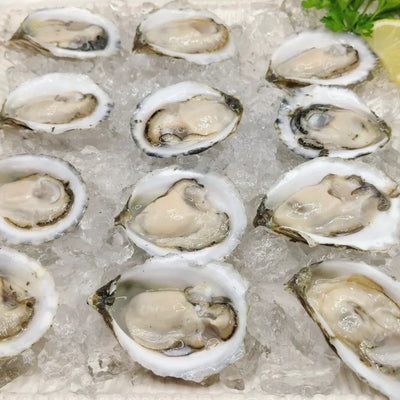Spat to Slurp Series
Part I: Spats
It’s normal to feel a sense of detachment from the origins of our food and the path it takes to us. When you’re asking for your second… or tenth… oyster at an event, or you are enjoying them at your favorite restaurant, you may be curious about how these creatures found their way to you. This is Part I of an Oyster XO series taking you through the life cycle of oysters. We will explore their journey from the coast to you, the consumer.
Habitat
Oysters generally inhabit coastal areas that provide the salinity and nutrients necessary for oyster growth and reproduction. Oysters congregate into communities called oyster reefs where they can grow and reproduce for generations. These communities comprise of many shells stacked on each other, forming shelter for other creatures of the sea. This is among the many interesting effects that oysters have on their ecosystem that we’ll dive into later in the series.
Reproduction
Upon maturity, which is about one to three years old, oysters are capable of reproducing, or spawning. You could say that oyster reproduction works in a domino effect fashion and occurs seasonally, as an increase in water temperature encourages reproduction. An adult oyster will release gametes (eggs or sperm) into the environment (the community mentioned above), which signals to the others that it’s time to reproduce, and they begin releasing gametes into the local area. This results in mass fertilization as eggs and sperm converge in the water. The newly fertilized eggs are fairly immobile and undergo cell division until they are considered larvae.
Growth
The oyster larvae find nourishment in phytoplankton and eventually grow a small foot that they use to find a suitable place to settle. These developing larvae typically prefer to find an oyster shell sitting around nearby, but other solid surfaces will suffice. Once settled, oyster larvae go through some physiological changes and become spats. Each spat takes in nutrients and dedicate energy to growing a shell of their own.
As alluded to above, each oyster spat will grow and reach maturity at the age of one to three years old. Then, the process begins again!
Onward
When oysters reach maturity, they are also ready to be harvested. This is the next step in an oyster’s journey to us. Now, the next time you enjoy an oyster at an event or in the comfort of your own home, you’ll be aware of the hard work that oyster went through to reach you. In Part II of this series, we will discuss oyster farming and the hard work these men and women undertake to deliver this precious delicacy to us!









